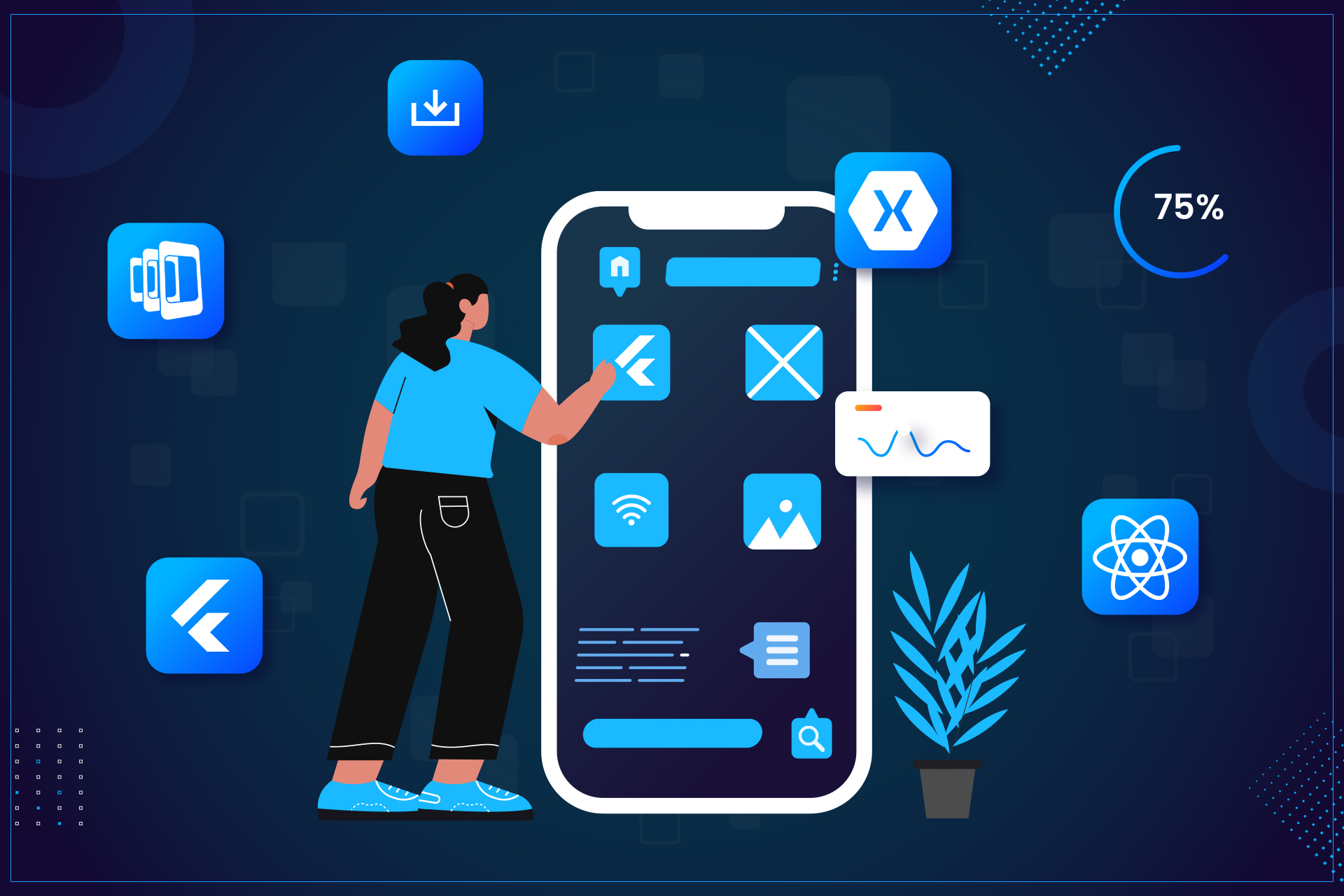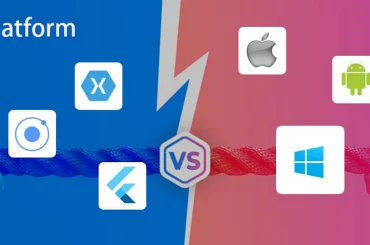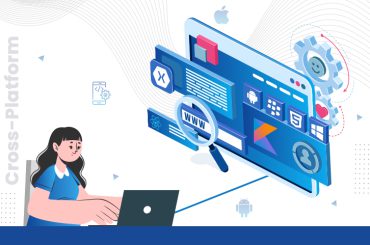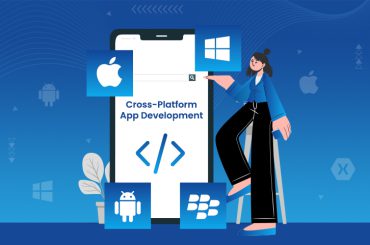Mobile apps are a base for markets across multiple businesses and industries. Popularity and usefulness generate the need for apps to be seamlessly functional over iOS and Android devices. The Cross-platform app development approach allows companies can quickly address these situations now.
Let’s discuss more about the cross-platform app development services, and later we will be enlisting the most popular cross-platform app development framework.
What Is Cross-Platform Development?
Cross-platform app development refers to the process of creating software applications that can run on multiple platforms or operating systems, such as iOS, Android, Windows, and the web, using a single codebase. It allows cross-platform app development company to write code once and deploy it across different platforms, saving time, effort, and resources compared to developing separate native apps for each platform.
Cross-platform development frameworks provide a set of tools, libraries, and APIs that enable developers to build applications that can run seamlessly on multiple platforms. These frameworks typically use programming languages like JavaScript, C#, or Dart, and employ various techniques to achieve platform compatibility, such as compiling code to a native format or using web technologies to render the application.
Also, Read About:- 5 Benefits Businesses Draw from Cross-Platform App Development
What are Cross-Platform App Development Frameworks?
To begin, we’ll provide a clear definition of cross-platform app development frameworks, explaining how they allow developers to create applications that can run on multiple platforms, such as iOS, Android, and the web. This flexibility saves time, effort, and resources, making cross-platform development an attractive option for businesses and developers alike.
Native vs. Cross-Platform App Development:
We’ll delve into a comparison between native and cross-platform app development approaches. This section will discuss the advantages and disadvantages of each approach, weighing factors such as performance, development time, and cost-effectiveness. By understanding these distinctions, readers can make informed decisions when choosing the right development strategy for their projects.
How to Choose the Right Cross-Platform App Development Framework?
Next, we’ll explore the key criteria that cross-platform app development company should consider when evaluating cross-platform app development frameworks. These criteria include performance and speed, code reusability, user interface (UI) and user experience (UX) capabilities, community and support, integration with native features and APIs, as well as available development tools and resources. By assessing these aspects, developers can select frameworks that align with their specific project requirements.
Top Cross-Platform App Development Frameworks in 2023:
In this section, we’ll showcase the most popular framework for cross-platform app development services. We’ll provide an overview of each framework and highlight its key features. Additionally, we’ll outline the pros and cons of using each framework, enabling readers to make informed decisions. Furthermore, we’ll explore notable use cases and highlight successful apps that have been built using these frameworks.
The top cross-platform app development frameworks in 2023 may vary based on factors such as industry trends, community adoption, and evolving technologies. However, here are some popular frameworks that are expected to maintain their prominence in 2023:
-
React Native:
– Overview: Developed by Facebook, React Native is a widely used JavaScript framework that allows developers mobile app development services for iOS and Android using a single codebase.
– Key Features: Hot-reloading, modular and reusable components, extensive community support, integration with native components.
– Pros: Efficient UI rendering, strong developer community, code reusability, performance approaching that of native apps.
– Cons: Limited access to low-level device APIs, potential performance bottlenecks, dependency on third-party libraries for specific functionalities.
-
Flutter:
– Overview: Created by Google, Flutter is an open-source UI toolkit that enables developers to build natively compiled applications for mobile, web, and desktop from a single codebase, using the Dart programming language.
– Key Features: Hot-reloading, customizable widgets, native-like performance, rich set of pre-built UI components.
– Pros: Fast rendering, attractive UI, excellent performance, seamless integration with platform-specific features, active developer community.
– Cons: Limited availability of third-party libraries compared to other frameworks, larger app size.
-
Xamarin:
– Overview: Xamarin, owned by Microsoft, is a framework that allows developers to build cross-platform mobile apps using C# and the .NET framework. It leverages the native APIs and UI components of each platform.
– Key Features: Shared codebase, access to native APIs, extensive library ecosystem, platform-specific UI customization.
– Pros: Full access to native APIs, high-performance apps, easy integration with existing .NET libraries, robust debugging and testing tools.
– Cons: Large app size, the learning curve for developers new to C# and .NET, community support not as extensive as other frameworks.
-
Ionic:
– Overview: Ionic is an open-source framework that enables developers to build cross-platform mobile, web, and desktop applications using web technologies such as HTML, CSS, and JavaScript.
– Key Features: UI components based on web standards, integration with Angular or React, and Cordova plugins for native functionality.
– Pros: Wide adoption, extensive documentation, easy integration with Angular and React ecosystems, ability to reuse web development skills.
– Cons: Performance may not match native apps, limited access to certain platform-specific features, reliance on WebView for rendering.
These are just a few of the top cross-platform app development frameworks in 2023. Other notable frameworks include PhoneGap, Adobe AIR, NativeScript, and Flutter’s integration with Dart. The choice of framework depends on factors such as project requirements, developer expertise, and the specific needs of the target platforms.
Also, Read About:- How to Choose the Right Framework for Cross-Platform Applications?
Emerging Trends in Cross-Platform App Development:
As technology continues to advance, mobile app development services are evolving as well. This section will explore the emerging trends in cross-platform development, including the rise of Progressive Web Apps (PWAs), integration of Internet of Things (IoT) capabilities, the incorporation of Augmented Reality (AR) and Virtual Reality (VR) experiences, as well as the integration of Machine Learning (ML) and Artificial Intelligence (AI) features.
Conclusion
We have emphasized the importance of selecting the right framework based on specific project requirements, considering the evaluation criteria discussed earlier. Additionally, we’ll touch on prospects and developments in cross-platform app development, demonstrating the exciting potential of this field.
By the end of this blog, readers will have a comprehensive understanding of cross-platform app development frameworks, enabling them to make informed decisions when choosing the right framework for their projects in 2023 and beyond.





